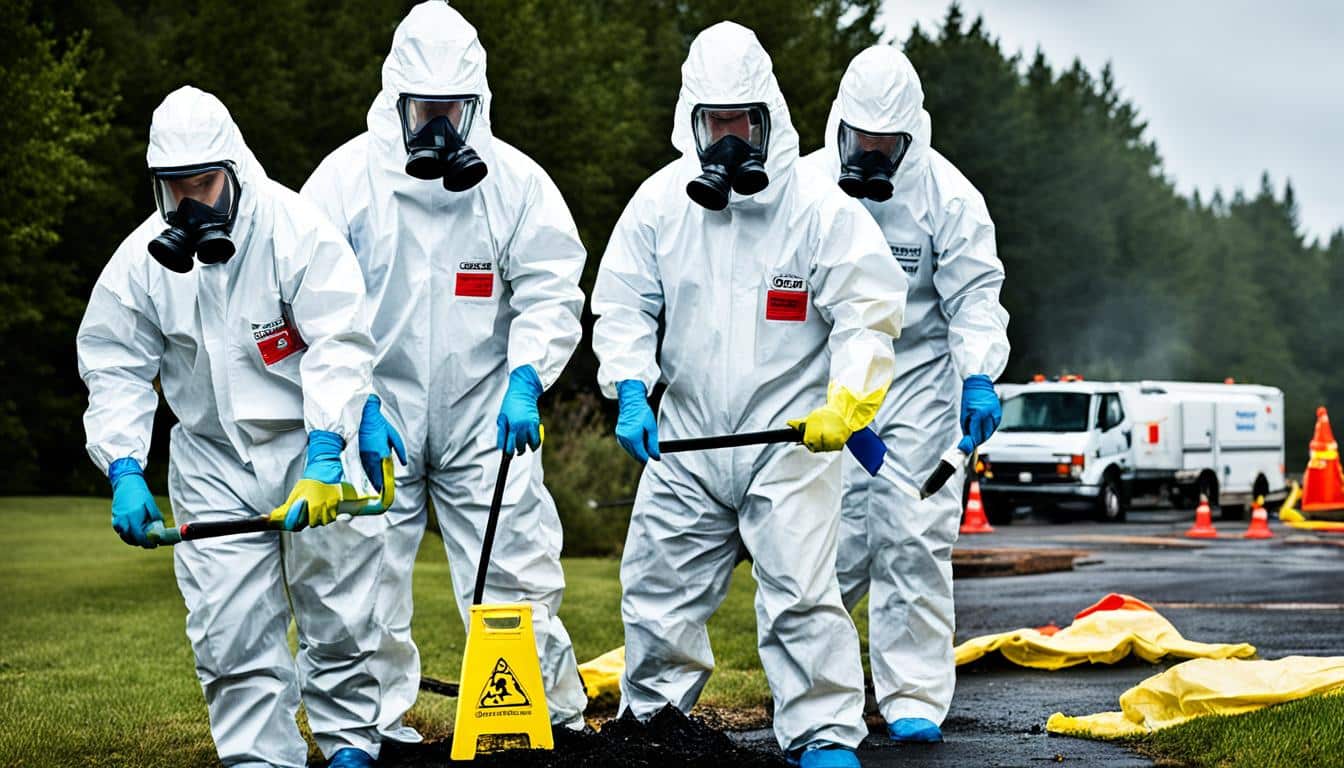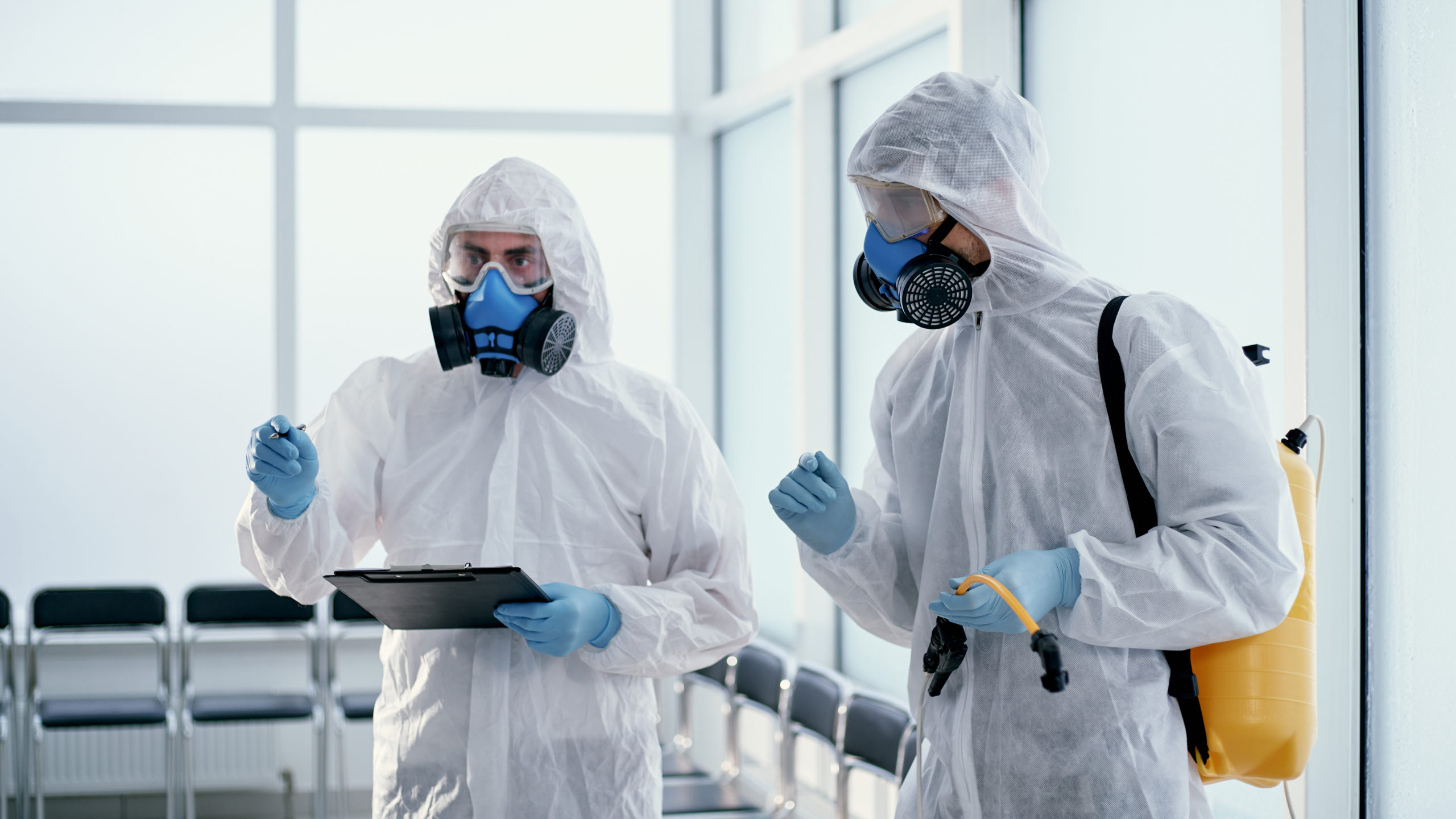Clandestine Lab Cleanup: Comprehensive Decontamination for Hazardous Sites
Clandestine Lab Cleanup: Comprehensive Decontamination for Hazardous Sites
Blog Article
Expert Biohazard Cleaning and Purification for Blood, Bodily Fluids, and Hazardous Products
The possible health and wellness dangers connected with direct exposure to biohazards underscore the critical requirement for thorough handling and extensive cleanup. As we browse the intricate landscape of biohazard cleanup, comprehending the nuances of regulations, conformity, and the specialized devices at play becomes necessary in making certain a comprehensive and risk-free purification process.
Health Dangers of Biohazard Direct Exposure
Direct exposure to biohazards positions considerable wellness threats that can result in severe repercussions for areas and individuals alike. Biohazards encompass a vast array of organic materials, consisting of blood, physical liquids, mold, bacteria, viruses, and other potentially contagious materials. When individuals enter call with these biohazards, whether with crashes, inappropriate handling, or ecological direct exposure, they encounter the threat of having serious illnesses or diseases.
One of the primary health risks connected with biohazard exposure is the transmission of infectious diseases. Bloodborne virus such as HIV, liver disease B and C, and numerous microorganisms can be existing in biohazardous products, presenting a straight risk to human health and wellness. Inhaling airborne biohazards like mold spores or entering call with infected surface areas can additionally bring about respiratory system concerns, allergies, and other damaging wellness impacts.
Additionally, biohazard exposure can have long-term wellness effects, with some illness materializing years after the initial call (Blood Cleanup). As a result, it is vital to prioritize proper biohazard cleansing and purification to alleviate these health risks and make certain the safety and security of people and neighborhoods

Specialized Training for Biohazard Cleaning
When it concerns taking care of biohazard clean-up successfully and safely, specialized training plays an essential duty in guaranteeing appropriate purification procedures are complied with. Biohazard cleaning requires particular expertise and abilities to effectively alleviate threats associated with bloodborne microorganisms, physical liquids, and unsafe materials. Professionals learnt biohazard cleaning undertake rigorous instruction on exactly how to securely take care of, get rid of, and get rid of biohazardous products to avoid contamination and direct exposure.
Specialized training for biohazard cleanup covers a range of vital subjects, consisting of correct individual safety equipment (PPE) use, bloodborne pathogen awareness, purification techniques, and contaminated materials disposal methods. Individuals educated in biohazard cleaning are outfitted with the needed know-how to examine contamination degrees, determine possible risks, and carry out proper clean-up procedures in compliance with regulatory standards.
Continual training and education and learning are extremely important in the area of biohazard cleaning to stay updated on the newest decontamination technologies, safety and security methods, and guidelines. By buying specialized training, biohazard cleanup professionals can effectively react to emergency situation cleanup situations and guard both public wellness and the atmosphere.
Importance of Correct Purification Techniques
Making use of correct decontamination strategies is critical in biohazard clean-up to efficiently remove harmful materials and decrease health dangers. Effective purification not only makes certain the removal of noticeable traces of blood, bodily liquids, and other biohazards yet likewise targets invisible virus that may present major wellness risks otherwise correctly gotten rid of. By complying with rigorous decontamination methods, trained experts can considerably lower the risk of direct exposure to dangerous microbes, viruses, and germs that can cause illness or infections.
Correct decontamination methods entail using customized equipment and anti-bacterials that are specifically developed to counteract biohazards effectively. Detailed cleaning and disinfection of infected areas are vital to stop the spread of virus and guarantee a risk-free setting for occupants. In addition, the appropriate disposal of biohazardous waste complying with purification procedures is crucial in preventing contamination of other surfaces or people.

Equipment and Devices for Safe Cleanup
When dealing with blood, bodily liquids, or dangerous products, biohazard cleansing professionals depend on specialized gear to minimize direct exposure threats and completely decontaminate the affected area. Additionally, biohazard cleansing packages consisting of disinfectants, absorbent products, and biohazard bags are utilized to safely dispose and have of infected items.
Advanced cleaning devices like hospital-grade anti-bacterials, HEPA-filtered vacuums, and fogging equipments are employed to sterilize surface areas and get rid of biohazards efficiently. Specialized tools such as sharps containers and biohazard waste disposal containers are made use of to securely manage sharp items and biohazardous waste products. By making use of the right equipment and tools, biohazard cleansing specialists can ensure a complete cleaning process that prioritizes security and lessens wellness threats for both employees and occupants of the affected space.
Laws and Compliance in Biohazard Cleaning
Appropriate adherence to guidelines and conformity criteria is extremely important in biohazard cleansing to more tips here ensure the safety of both personnel and the environment. Government agencies such as OSHA (Occupational Safety and Health Administration) and the EPA (Environmental Protection Agency) have established specific standards for biohazard cleaning treatments to lessen health and wellness dangers and environmental contamination. These policies cover a variety of aspects including the handling, transport, and disposal of biohazardous products, in addition to the needed training and protective equipment needed for employees associated with the clean-up process.
Biohazard cleaning firms need to stay up-to-date with these regulations to assure that their procedures satisfy the called for safety and security requirements. Failure to follow these laws can lead to severe consequences, consisting of fines, lawful activity, and threatening the health of people and the setting. By complying with strict regulations and conformity procedures, biohazard cleaning firms can properly alleviate risks and make certain a detailed and risk-free cleaning process for all events included.
Conclusion
Finally, biohazard cleaning and decontamination call for specific training, proper strategies, and adherence to policies. Direct exposure to blood, bodily liquids, and dangerous materials presents considerable wellness dangers, making it essential to use the ideal equipment and devices for safe cleaning. By complying with rigorous protocols and standards, professionals can efficiently minimize the dangers linked with biohazard exposure and guarantee the safety and security additional hints of both themselves and others.
As we navigate the complex landscape of biohazard cleaning, comprehending the subtleties of regulations, conformity, and the customized equipment at play ends up being important in making certain a safe and comprehensive decontamination process. (Blood Cleanup)
When it comes to managing biohazard cleaning successfully and safely, specialized training plays a fundamental function in making sure correct purification procedures are followed.Utilizing appropriate purification strategies is critical in biohazard cleanup to efficiently lessen and eliminate dangerous materials health and wellness risks. Furthermore, biohazard crime scene cleaner qualifications cleaning sets consisting of anti-bacterials, absorptive materials, and biohazard bags are utilized to safely dispose and consist of of polluted products.
Government agencies such as OSHA (Occupational Safety and Wellness Management) and the EPA (Environmental Security Company) have developed details standards for biohazard clean-up procedures to minimize health threats and ecological contamination.
Report this page